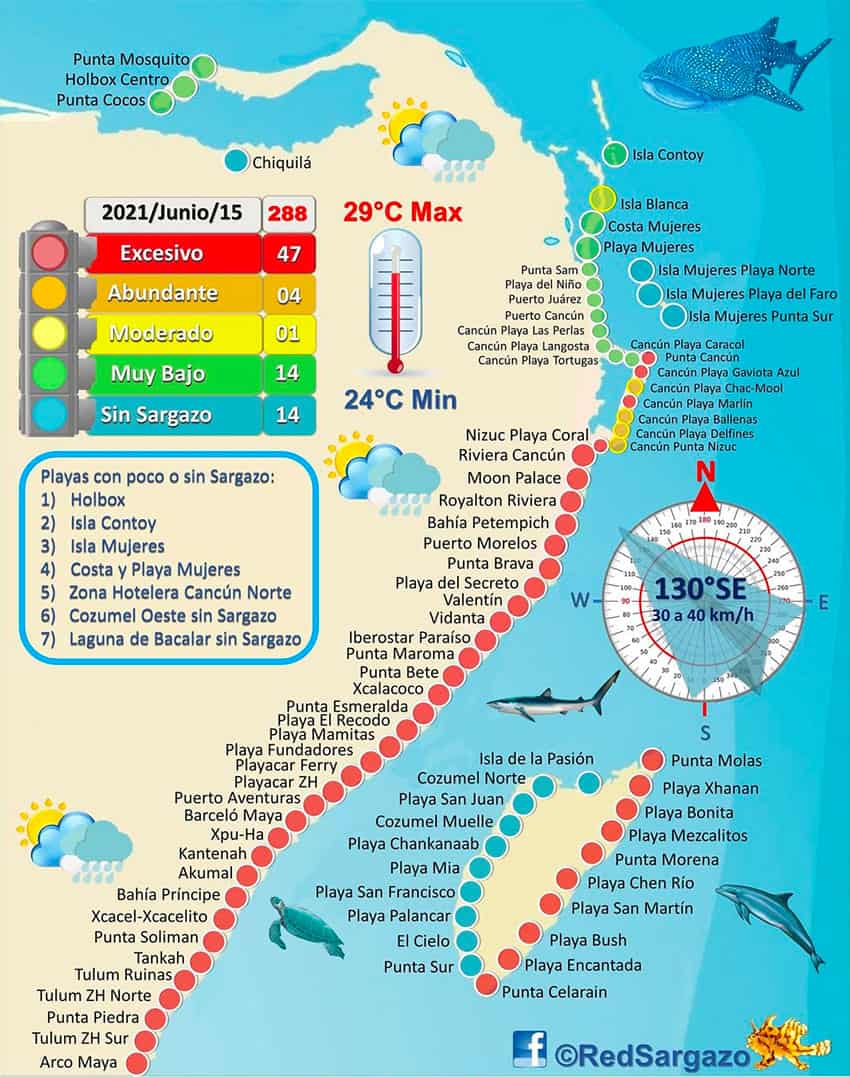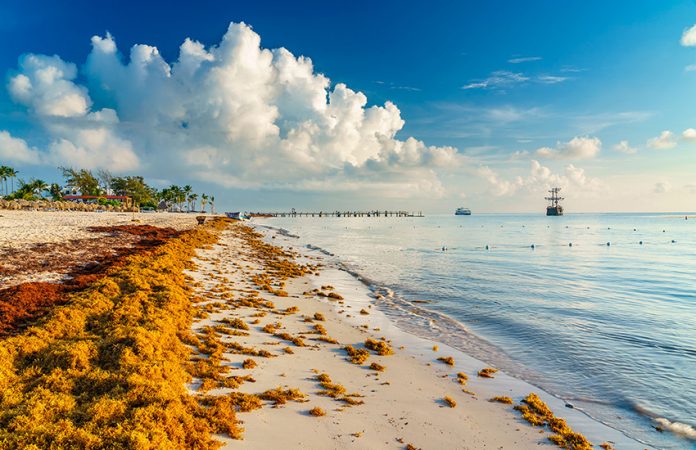Almost 2,000 tonnes of sargassum is expected to reach the Quintana Roo coastline this week, authorities have warned.
The Ministry of the Navy, which is responsible for combatting the arrival of the seaweed on Quintana Roo’s white-sand beaches, said Monday that there are large accumulations of sargassum off the coast of Mahahual, Punta Herrero and Cozumel.
There are some 996 tonnes near Mahahual, located in the Caribbean coast state’s southernmost municipality, and 887 tonnes off the coast of Punta Herrero, situated about 80 kilometers north.
The navy said there are approximately 92 tonnes of sargassum about 30 kilometers south of Cozumel. The combined weight of the three large masses of seaweed is 1,975 tonnes.
Large quantities of the unsightly plant are expected to wash up in the coming days on beaches in Cancún, Playa del Carmen and Tulum, among other Quintana Roo resort destinations.

Forty-seven beaches in the northern half of the state already have excessive amounts of sargassum, according to the Quintana Roo Sargassum Monitoring Network, which published an updated map today.
The map shows that every beach between Nizuc Playa Coral in Cancún and Arco Maya in Tulum, and all those on the east coast of Cozumel, currently have excessive amounts of the weed, which arrives annually between March and September. Four other beaches have abundant quantities of seaweed and one has a moderate amount.
People seeking sargassum-free beaches should head to the west coast of Cozumel or to Isla Mujeres, a small island off the coast of Cancún.
Authorities, hotel owners, environmental groups and others work tirelessly to remove sargassum from beaches, but winning the battle can be extremely difficult when excessive amounts of the weed are arriving.
The newspaper La Jornada Maya reported that there are not enough sargassum collectors in Tulum to keep beaches clear of the macroalgae, which emits a fetid odor as it decomposes and can pose a risk to the environment.
As a result of the presence of sargassum and below-average tourist numbers due to the pandemic, boat tour operators in Tulum reported that demand for their services has declined 45% in recent weeks.

One tour operator told La Jornada Maya that tourism sector workers have seen their incomes decline during the last three weeks. Ever Addiel Cartagena Pérez said that most people don’t want to swim amid clumps of sargassum and that some beachgoers are allergic to it.
“They get welts. … Almost everyone says that the water is dirty, and that’s why they don’t want to go in and swim, … tourism has definitely dropped off a bit here,” he said.
Renato Canto, another tour operator in Tulum, said that sargassum barriers are being overwhelmed by the large volumes of seaweed that are drifting toward the coast.
“All the water tourist service cooperative members and the fishermen work to collect the sargassum, but we’re overrun by the tonnes that arrive every day. That’s why we’re calling on the authorities to do something more effective, given that the [sargassum] nets in place are not … stopping the seaweed from reaching the coast,” he said.
With reports from Periódico Viaje, Reportur and La Jornada Maya
